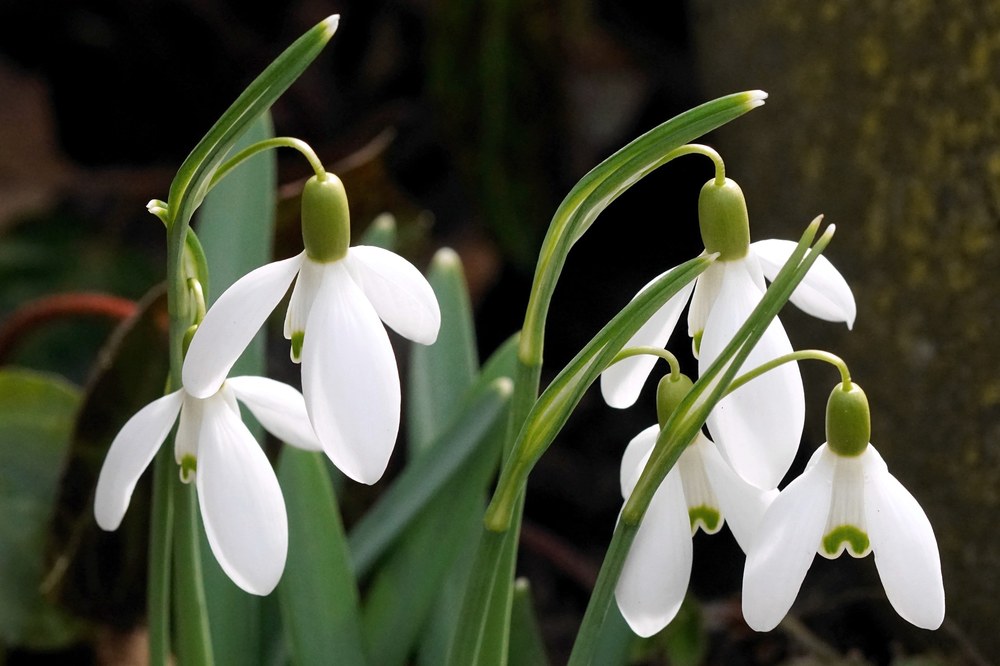Dainty white flowers of this early-blooming bulb often poke through a layer of snow.

According to The Old Farmer's Almanac and other sources of folklore, in some early descriptions, the snowdrop was considered to represent bad luck because it seemed to grow frequently in graveyards. Happily, today this delicate flower signifies hope and beauty. The pure white color represents purity, innocence, and sympathy. Because snowdrops are early-blooming bulbs that often poke through a layer of snow, they seem especially representative of renewal and rebirth. The dainty blooms offer the expectation of spring, even though winter snow is still on the ground. The snowdrop can bloom from January through March, although it blooms in much of Pennsylvania in late February or March.
The following cultural information on snowdrops is from the Penn State Extension article "Snowdrops" by Martha Murdock:
Snowdrops, which are native to Europe and the Middle East, are very popular in the northern United States and have widely naturalized. Also common in Great Britain, special tours visit areas where the naturalized flowers form impressive carpets of white blooms. There are even snowdrop festivals held in Scotland. However, you do not need to travel outside of Pennsylvania to attend one of these breathtaking events. Consider traveling to Downingtown, Pennsylvania, which holds its own annual Galanthus Gala.
A member of the Amaryllis family, snowdrops comprise a small genus (Galanthus) with about 20 species. The common snowdrop grows only 3-6" tall, with linear leaves. The plants have a single small drooping bell-shaped flower with six white petal-like sepals, sometimes marked with green. The giant snowdrop (Galanthus elwesii) looks very similar, just larger, growing from 14-16" tall.
Snowdrops prefer part shade to full sun, and benefit from a rich humus soil with good drainage. However, they will tolerate a variety of soils. Plant the bulbs in the fall about 2-3" deep. Snowdrops need a cold period, known as stratification, in order to bloom. Temperatures need to go below 20° during stratification, so this plant will not be found growing in southern gardens. Nor will you see them in the far north, as they will not survive temperatures below minus 30°.
Attractive in woodland settings and rock gardens, they also may be planted under deciduous trees, as they will bloom and die back before the trees leaf out. Pretty planted in drifts of up to 25 bulbs, they will spread over time. To speed up propagation, carefully dig and divide them soon after they are done blooming.
Snowdrops have no serious insect or disease problems and are deer resistant. However, there is a caution for pets and children: the plants are poisonous if ingested. Some gardeners also report skin irritation and recommend gloves when handling.
If possible, you might want to try growing your own birth flower, or that of a family member or friend. How thoughtful it would be to give a loved one a bouquet including homegrown flowers personalized by birth month! Maybe even tuck a few in a winter bride's bouquet for special emphasis.
Whether you are a "January Baby" or not, plant groupings of snowdrops in your garden or landscape to see a bit of spring emerge early every year. They are bright and uplifting and truly do seem to represent hope, beauty, and renewal!
~by Joan Banyas, Luzerne County Master Gardener Trainee

